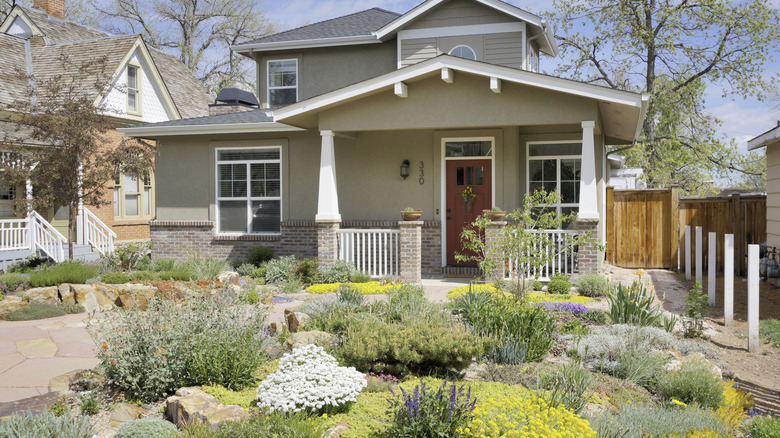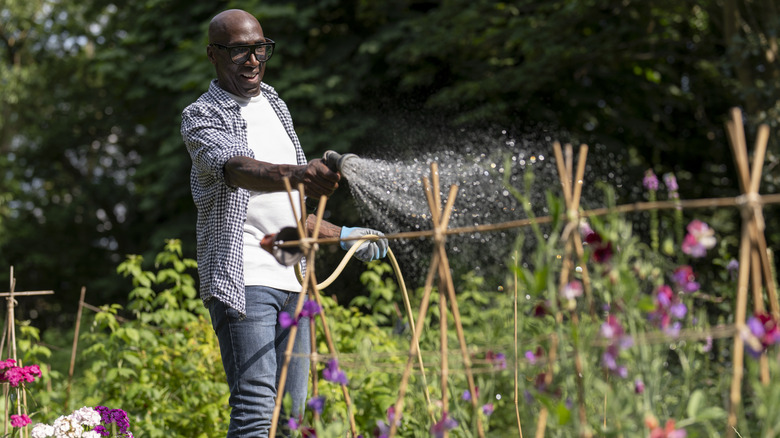The Watering Tip That Keeps Your Colorado Garden Thriving In The Heat
Native, long-time, or newly transplanted Coloradans all could use a reminder about summer rains: Just because we have a summer monsoon season doesn't mean your garden is getting adequate water. Those afternoon and evening showers that blow in almost daily for a few weeks sometimes don't provide enough moisture for our flower and vegetable patches. Plan regular, intensive interventions with the hose to ensure that the sweat you shed earns equity.
Colorado is a semi-arid state, and it's often drier than fits with our gardening plans. It's good practice to fill your landscape here with drought-resistant plants that will thrive without much water. But those of us who can't resist planting some of summer staples like tomatoes, leafy greens, and peppers, should make sure that these guys get generous drinks when that high-altitude sun puts out its peak heat.
Most gardeners in this sunny, mountainous rectangle are used to occasional watering restrictions and conservation techniques. It can be tempting to limit waterings to infrequent shallow affairs, but this is a mistake to avoid when watering your garden in Colorado. What will really carry our flowers, fruits, and veg through the baking heat are deep, quenching waterings at the right time.
Make the most of your garden's water
Start by making sure your plants are truly in need of a generous watering. If you've gotten a ½ inch of rain or more in a day, you shouldn't need to water. However, if the top 2 to 4 inches of soil are dry to the touch, it's time to give the plants a drink. The best times to water are a couple of hours before sunset or in the early morning, before 10 o'clock.
This might sting if you're stingy with the water, but once days reach temperatures of 90 degrees Fahrenheit and higher, Colorado gardens could really use two daily waterings. Of course, this frequency won't work if you have a packed calendar. A more schedule-friendly method that ensures you're giving the proper dose is soaking each bed fully two or three times, letting the soil absorb the water between each round. Also, consider looking into drip hoses or irrigation systems that deliver water right to the soil. These methods are more efficient than hand watering.
Help the growing medium hold onto that precious moisture as long as possible by mulching your plants. The best kind of mulch for your garden will hold in moisture, prevent weeds, and give your soil nutrients at the same time. Consider pine needles, grass cuttings, or leaves. For a fire-resistant mulch, hit up your local microbrewery to see if they have used hops they need to get rid of.

